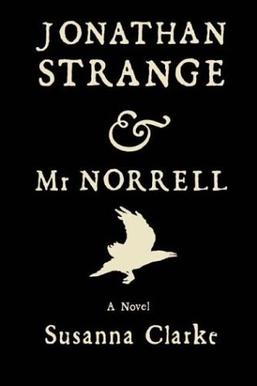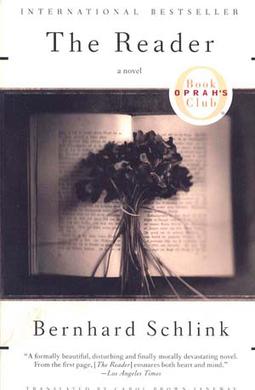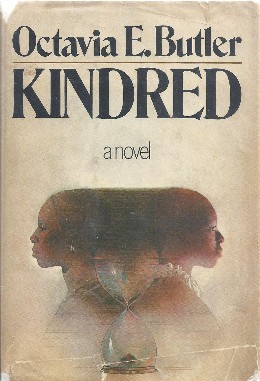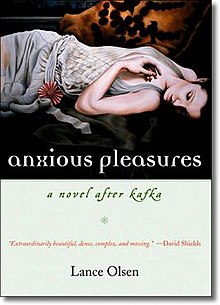
Franz Kafka was a German-speaking Bohemian Jewish novelist and writer from Prague. He is widely regarded as one of the major figures of 20th-century literature. His work fuses elements of realism and the fantastic. It typically features isolated protagonists facing bizarre or surrealistic predicaments and incomprehensible socio-bureaucratic powers. It has been interpreted as exploring themes of alienation, existential anxiety, guilt, and absurdity. His best known works include the novella The Metamorphosis and novels The Trial and The Castle. The term Kafkaesque has entered English to describe absurd situations like those depicted in his writing.

The Metamorphosis is a novella by Franz Kafka published in 1915. Its title has also been translated as The Transformation. One of Kafka's best-known works, The Metamorphosis tells the story of salesman Gregor Samsa, who wakes one morning to find himself inexplicably transformed into a huge insect and struggles to adjust to this condition. The novella has been widely discussed among literary critics, who have offered varied interpretations. In popular culture and adaptations of the novella, the insect is commonly depicted as a cockroach.
Psychoanalytic literary criticism is literary criticism or literary theory that, in method, concept, or form, is influenced by the tradition of psychoanalysis begun by Sigmund Freud.
Metafiction is a form of fiction that emphasizes its own narrative structure in a way that inherently reminds the audience that they are reading or viewing a fictional work. Metafiction is self-conscious about language, literary form, and story-telling, and works of metafiction directly or indirectly draw attention to their status as artifacts. Metafiction is frequently used as a form of parody or a tool to undermine literary conventions and explore the relationship between literature and reality, life, and art.

Amerika, (German working title Der Verschollene, "The Missing") also known as The Man Who Disappeared (Amerika), Amerika: The Missing Person and Lost in America, is the incomplete first novel by author Franz Kafka (1883–1924), written between 1911 and 1914 and published posthumously in 1927. The novel originally began as a short story titled "The Stoker". The novel incorporates many details of the experiences of his relatives who had emigrated to the United States. The commonly used title Amerika is from the edition of the text put together by Kafka's close friend, Max Brod, after Kafka's death in 1924. It has been published in at least three major English-language versions: as Amerika, translated by Edwin and Willa Muir (1938); as The Man Who Disappeared (Amerika), translated by Michael Hoffmann (1996); and as Amerika: The Missing Person, translated by Mark Harman (2008).

Jonathan Strange & Mr Norrell is the debut novel by British writer Susanna Clarke. Published in 2004, it is an alternative history set in 19th-century England around the time of the Napoleonic Wars. Its premise is that magic once existed in England and has returned with two men: Gilbert Norrell and Jonathan Strange. Centred on the relationship between these two men, the novel investigates the nature of "Englishness" and the boundaries between reason and unreason, Anglo-Saxon and Anglo-Dane, and Northern and Southern English cultural tropes/stereotypes. It has been described as a fantasy novel, an alternative history, and a historical novel. It inverts the Industrial Revolution conception of the North–South divide in England: in this book the North is romantic and magical, rather than rational and concrete.

Kafka on the Shore is a 2002 novel by Japanese author Haruki Murakami. Its 2005 English translation was among "The 10 Best Books of 2005" from The New York Times and received the World Fantasy Award for 2006. The book tells the stories of the young Kafka Tamura, a bookish 15-year-old boy who runs away from his Oedipal curse, and Satoru Nakata, an old, disabled man with the uncanny ability to talk to cats. The book incorporates themes of music as a communicative conduit, metaphysics, dreams, fate, and the subconscious.

The Reader is a novel by German law professor and judge Bernhard Schlink, published in Germany in 1995 and in the United States in 1997. The story is a parable, dealing with the difficulties post-war German generations have had comprehending the Holocaust; Ruth Franklin writes that it was aimed specifically at the generation Bertolt Brecht called the Nachgeborenen, those who came after. Like other novels in the genre of Vergangenheitsbewältigung, the struggle to come to terms with the past, The Reader explores how the post-war generations should approach the generation that took part in, or witnessed, the atrocities. These are the questions at the heart of Holocaust literature in the late 20th and early 21st century, as the victims and witnesses die and living memory fades.

The Prestige is a 1995 science fiction novel by British writer Christopher Priest. It tells the story of a prolonged feud between two stage magicians in late 1800s England. Its structure is that of a collection of diaries that were kept by the protagonists and later collated. The title derives from the novel's fictional practice of stage illusions having three parts: the setup, the performance, and the prestige (effect).

A Wild Sheep Chase is the third novel by Japanese author Haruki Murakami. First published in Japan in 1982, it was translated into English in 1989. It is an independent sequel to Pinball, 1973, and the third book in the so-called "Trilogy of the Rat". It won the 1982 Noma Literary Newcomer's Prize.

Kindred (1979) is a novel by American writer Octavia E. Butler that incorporates time travel and is modeled on slave narratives. Widely popular, it has frequently been chosen as a text by community-wide reading programs and book organizations, and for high school and college courses.

Lance Olsen is an American writer known for his experimental, lyrical, fragmentary, cross-genre narratives that question the limits of historical knowledge.

Suspense is a state of anxiety or excitement caused by mysteriousness, uncertainty, doubt, or undecidedness. In a narrative work, suspense is the audience's excited anticipation about the plot or conflict, particularly as it affects a character for whom the audience feels sympathy. However, suspense is not exclusive to narratives.

The Myst Reader is a collection of three novels based on the Myst series of adventure games. The collection was published in September 2004 and combines three works previously published separately: The Book of Atrus (1995), The Book of Ti'ana (1996), and The Book of D'ni (1997). The novels were each written by British science-fiction writer David Wingrove with assistance from Myst's creators, Rand and Robyn Miller.

The Storyteller is a novel by Peruvian author and Literature Nobel Prize winner Mario Vargas Llosa. The story tells of Saúl Zuratas, a university student who leaves civilization and becomes a "storyteller" for the Machiguenga Native Americans. The novel thematizes the Westernization of indigenous peoples through missions and through anthropological studies, and questions the perceived notion that indigenous cultures are set in stone.

Nietzsche's Kisses is a postmodern novel by Lance Olsen, published in 2006 by Fiction Collective Two. It is a work of historiographic metafiction.

Head in Flames is a postmodern novel by Lance Olsen, published by Chiasmus Press in 2009.
Lecia Cornwall is a Canadian author of romantic fiction. Her works have primarily featured the Regency era.

Theories of Forgetting is a postmodern novel by Lance Olsen, published by Fiction Collective Two in 2014.
When We Cease to Understand the World is a book by the Chilean writer Benjamín Labatut. The book was written in Spanish, translated to English by Adrian Nathan West, and was published in 2021 by the New York Review of Books. It is a novel that presents early scientists, who had made 'sacrifices' in revolutionizing science and its related fields. It focuses on the themes of sacrifice, madness, violence, and destruction that lie beneath the discovery of science and its advancement.
















